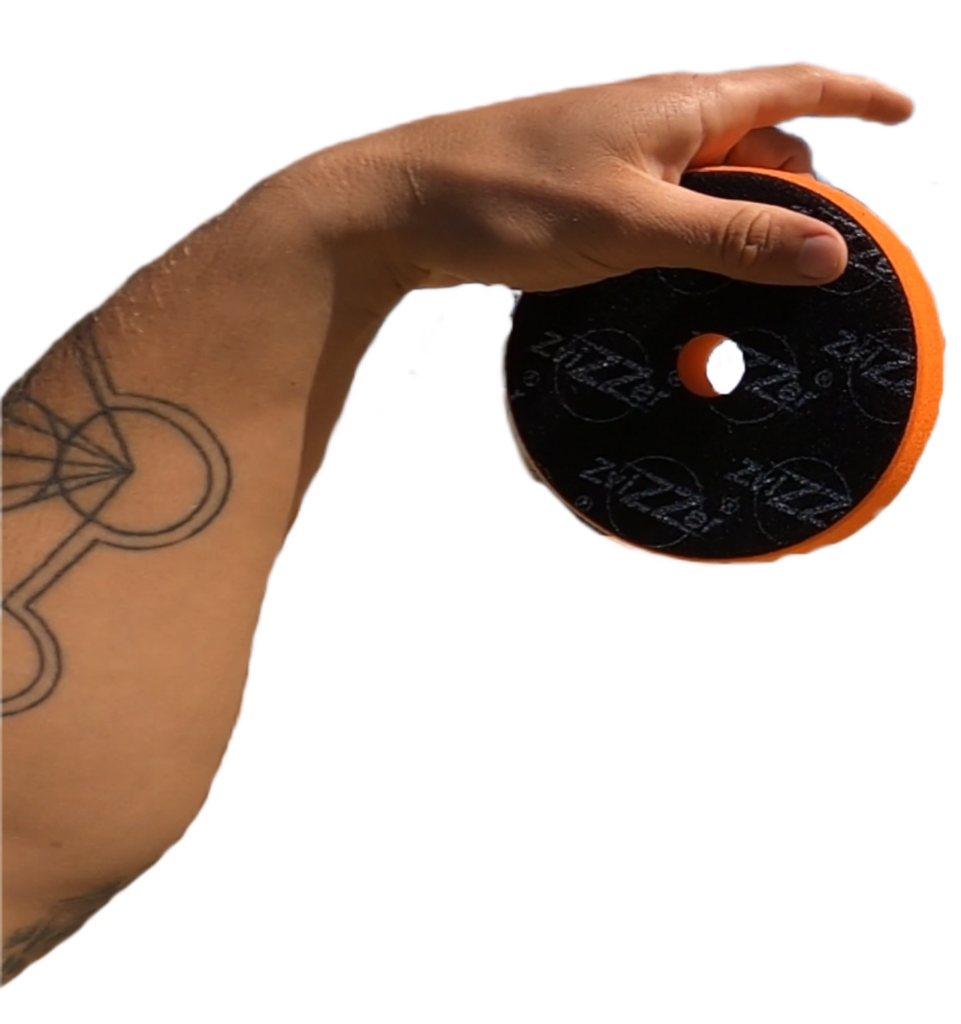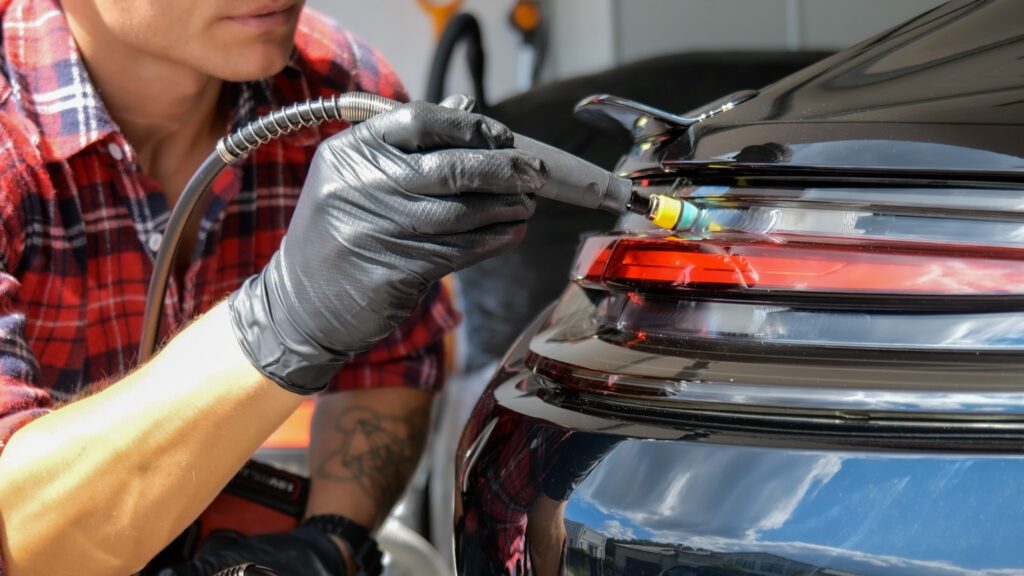
Polishing pads – also known as buffing discs or pads – are essential tools for serious automotive detailing. They are used for paint correction, polishing, and finishing, depending on their material and structure.
Pads are typically made from foam, microfiber, wool, or a combination of all three. Each material offers different cutting or finishing levels. Most pads feature a Velcro backing, which makes it easy to attach them to polishing machines and remove without damaging the pad. Important: Never peel the pad off by the foam only – this can separate the layers. Always grip the whole pad sandwich or use a spatula between the Velcro and the pad for a safe removal.
Many pads feature a center hole, which helps dissipate heat; this prevents overheating of both the pad and the painted surface during extended use.
Main Types of Polishing Pads:

✅ Foam Pads
– The most popular choice.
– Available in different hardness levels: from soft to super hard.
– Soft ones are for final polishing and glossing, hard ones – for scratch correction.

Pros: Great price-to-performance ratio, suitable for most tasks.
Cons: They wear out faster, especially if you don’t maintain them properly.
✅ Microfiber Pads
– More effective for deeper correction.
– Quickly “bite into” scratches but might leave micro-marring if not followed up with a softer pad.
Pros: Excellent results with less compound.
Cons: Need more care, frequent washing to keep them soft and effective.
✅ Wool Pads
– Real beasts for heavy correction.
– Best used with rotary machines when dealing with serious defects.
Pros: Fast and powerful correction.
Cons: Requires skill – easy to cause holograms if you’re not careful.
✅ Thermo pads are advanced polishing pads designed to maintain their structure even under high temperatures. They don’t soften or lose effectiveness, ensuring consistent cutting performance even during intensive work. Additionally, these pads are far more durable – their lifespan can be up to 5 times longer than that of regular pads.
These pads are compatible with a wide range of polishing machines – both rotary and dual-action. They also feature a central hole that helps reduce heat buildup, which is especially important during extended work on a single surface.
Heat Management
You already know about the center hole, but let’s go deeper – heat is one of the biggest causes of paint damage, especially if you make several passes over the same spot.
That’s why not only the center hole, but also ventilation grooves (found in some modern pads) play a key role in keeping both the pad and the paint cool.
Pad Sizes and Their Purpose

Small pads (1–3 inches): Perfect for tight areas like emblems, door handles, and mirrors.
Medium pads (5–6 inches): The most common choice, suitable for almost all polishing jobs.
Large pads (7 inches and up): Cover larger surfaces quickly but are harder to control. Best for professionals.
Pad Care = Longer Life
Always wash your pad right after use with warm water and mild detergent.
Avoid hot water – it can damage the Velcro backing.
Some detailers use special pad cleaning brushes or spinning pad washers to keep them fresh.
How Long Does One Pad Last?
It depends on how often and how aggressively you use it, and how well you care for it.
On average, a foam pad will last for about 10–15 cars if cleaned and stored properly.
Wool and microfiber pads might wear out faster if not regularly washed.
When Is It Time to Replace a Pad?
If your pad loses its shape, becomes compressed, splits in the middle, or no longer sticks properly to your machine, it’s time to toss it.
Also, if it stops absorbing polish or starts spreading it unevenly, it’s not doing its job anymore.
How do polishing pads work?
The essence of polishing is friction. Polishing pads are designed to distribute and retain abrasive compounds during rotation. When the abrasives start to interact with the surface, the pad essentially becomes ultra-fine “sandpaper”, and the correction happens via mechanical friction. Due to their flexibility, pads adapt to curved surfaces evenly, which is key for consistent results.

What are the benefits of polishing pads?
They remove paint dust, oxidation, and other unclean surface layers. Polishing pads are effective and safe for polishing any surface. They hold the paste’s abrasives
to the surface, simultaneously buffing out scratches. Pads come in different sizes and shapes, allowing them to be tailored to different polishing tasks. Different pads can be used for different types of surfaces. Pads can enhance surface color and gloss, giving it a refreshed and shiny appearance.
And one more thing… If all this is new to you, no worries. We all started from zero at some point. I did too.
That’s exactly why I created Detailing ABC training – so you don’t waste years making the same mistakes I’ve already made for you. 👉 Want in? Join here
That’s it. Now go check if your pads are still alive… or maybe it’s time for an upgrade? 😄
Start your detailing Journey
Want to learn not just how to make cars shine, but how to work smart, fast, and profitably?
My Detailing ABC course isn’t just theory – it’s real tools to kickstart your career.
Start today – because no one else is going to chase your dream for you.

